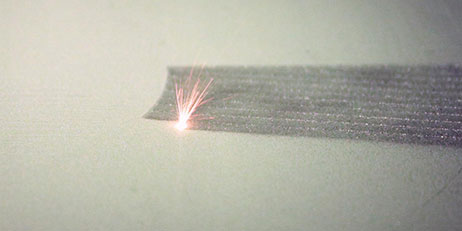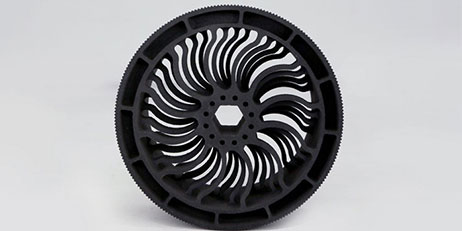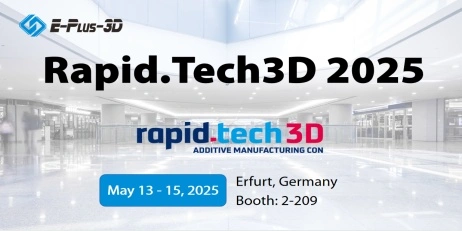The design and production of lightweight components – sometimes referred to as lightweighting – is a growing trend among an increasing number of industries including transportation, tooling, energy, and health care.
As conveyed by the name, lightweighting is the process of building lighter components while retaining or even augmenting their integrity and strength. Some of the benefits include:
Lighter components offer wide ranging benefits from enhancing fuel efficiencies in transportation to greater viability as implants or prosthetics.
Components are often at least as strong as heavier materials previously used due to technological developments and commercial feasibility improvements.
More efficient use of material and the energy required in production, making them more environmentally friendly and addressing a growing concern among policy makers and consumers alike.
Cost reduction. Less material per component means less capital per component.
Additive manufacturing helps break down many of the hurdles to the production of lightweight components. Here are 4 ways additive manufacturing/3D printing helps produce lighter components:
Method I – Lattice Structures
Additive manufacturing makes the use and scale of lattice structures far more accessible.
You may not realize it, but you can see lattice structures (bridges, the Eiffel tower) everywhere and they even happen in nature. Lattice structures feature a high strength-to-weight ratio.
Lattice structures are three-dimensional open-celled structures composed of one or more repeating unit cells. These cells are defined by their dimensions and connectivity of their constituent struts, which are connected at specific nodes and can achieve the ideal balance of engineering strength, toughness, durability, statics, dynamics and manufacturing cost.
The relative density of crystal lattice, the shape, size, and material are adjusted by periodically duplicating a large number of single cells for design and manufacture, so as to adjust the mechanical properties of the structure, such as strength and toughness.

A 3D lattice structure offers a high degree of spatial symmetry which can evenly disperse an external load, reduce weight and increase load bearing capacity. In addition to engineering applications, a hollow lattice structure features a ‘gap’ (or adjustable aperture), which can facilitate integration into the human body and the implant tissue in the application of the implant.
Lattice design is very flexible and lattice elements with different shapes, sizes and porosity can be customized to suit their use. In the area with high structural strength, the density of lattice element can be adjusted to be larger and the hollow lattice element with high structural strength can be selected.
In the area with high requirements for weight reduction of component, hollow lattice structure with large weight reduction range can be added. The hollow structure can be arranged regularly or randomly to form irregular pores. In addition, the hollow structure can also present gradient transition arrangement of variable density and thickness to meet the requirements of the overall gradient strength of the components.
Method II - Hollow Interlayer / Thin-walled Stiffened Structural Design
3D printing gives the designer a wide range of design options not available to traditional processes.
The use of different infills (interlayers) and wall settings and thicknesses allows the designer not only to reduce the net weight of the component, but also to compensate for the various loads and stresses the component will have to bear.
The infilled structure helps realize a weight reduction of components. It offers a good dispersive effect of the external pressures, and the thin-walled structure (such as wall thickness less than 1 mm) is conducive to weight reduction.
Consider a simple curtain rod, under a bending or flexural load where the surface material bears most of tensile stress and compressive stresses. Now imagine a core infill that was added to help disperse the load. The effect would be to increase the total strength of the rod without having to resort to a solid metal rod or even increasing the wall thickness.
Additionally, infills and other similar structures can be used in radiators to improve the heat exchange area and heat dissipation efficiency of parts.
In sum, interlayer structure has the advantages of offering net weight reduction, high bending stiffness and strength, strong anti-instability ability, fatigue resistance, sound absorption and heat insulation.

In aviation, wind turbine blades, ships, trains and other fields, lightweight interlayer structures are widely used to reduce weight.
Method III - Topological Optimization
3D printing is the most efficient method of generating topology optimization.
Topology optimization is mathematical method used to identify and remove excess materials that do not affect the functionality of the part by determining the optimal material distribution within required parameters.

Once the topology has been optimized, the special-shaped structure is simulated and analyzed to complete the final modeling. It is not unusual for optimized components to be more than 45% lighter than their non-optimized counterparts.
Sometimes these designs can be produced using traditional methods, but traditional methods do not realize the full value of the optimization process. For instance, a 5 axis CNC router can be used to reduce the net weight and achieve the desired topology, but only by producing an equivalent amount of waste material.
The additive process of 3d printing on the other hand eliminates (or at least greatly reduces in the case of supports) waste material and realizes the full efficiency of the optimization process.
Method IV - Integrated Components
3d printing can be used to produce integrated parts originally composed of multiple components into one. This process not only enhances the integral structure of the overall structure, but also avoids the use of connection structures like flanges, welds, etc. used in the original configuration of parts.
This helps designers to break through constraints and realize functional optimization design.

The integrated structure through 3d printing not only improves the tendency of nozzle overheating and carbon deposition, but also increases the service life of the nozzle and improves the performance of the engine.
The above-mentioned four 3d printing structures are one of the directions to realize mechanical lightweight, and it is a systematic project. From the design optimization and manufacturing of each key component to the research and development and application of lightweight materials, it is indispensable on the road of lightweight exploration.



























